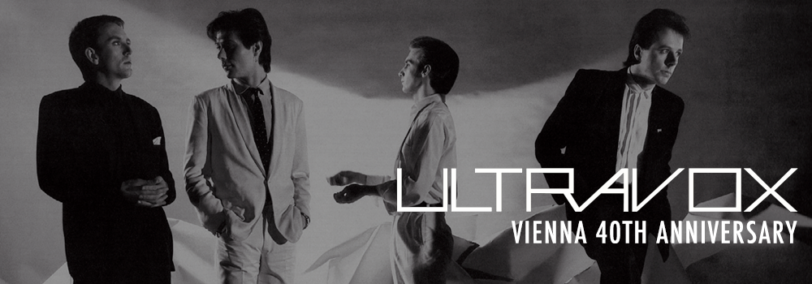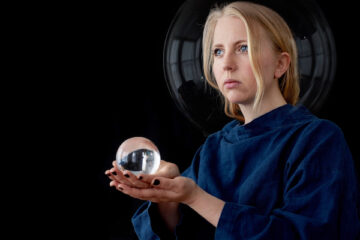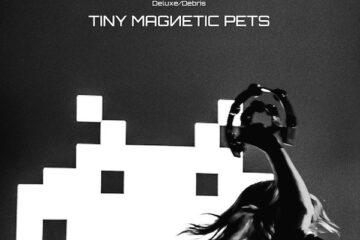It fades to the distance…
Ultravox’s Vienna album was originally released on Chrysalis Records on the 11th July 1980. Produced by the legendary German producer Conny Plank (Neu!, Kraftwerk), whom had worked with the band previously, (and would work with them again on 1981’s Rage in Eden), it reached No.3 in the UK album chart and the top ten in Australia, New Zealand and several European countries.
The album features 4 UK charting singles (including 3 which were Top 40); ‘All Stood Still’, ‘Passing Strangers’ and ‘Sleepwalk’ (which was recently reissued as part of Record Store Day 2020), as well as the title track ‘Vienna’.
40 years on, TEC takes the opportunity to look back and examine the seminal album that not only launched Ultravox into the mainstream, but introduced what we have come to know as the ‘classic’ line-up.
![]()
Today, the music remains amongst the most timeless out there, yet back in 1979, the band having just completed their US tour, it was probably hard to determine which wet and cobbled street Ultravox might set foot upon, once they returned home, and not least, in which direction they might travel, if at all.
 Dropped by Island records, and minus a lead vocalist, you’d be forgiven for deeming the band spent, with absolutely no evidence of any kind of pending future. It would seem that luck and destiny had changed, however, when Rusty Egan (of the Rich Kids) introduced Midge Ure to Billy Currie – they had of course been working on songs that were to become ‘Visage.’ It’s probably fair to say the rest is history. Midge fit the requirements perfectly, with vocal talents, keyboard skills and not least, some great chops on his guitar, coupled (at the time) with a Vox AC30.
Dropped by Island records, and minus a lead vocalist, you’d be forgiven for deeming the band spent, with absolutely no evidence of any kind of pending future. It would seem that luck and destiny had changed, however, when Rusty Egan (of the Rich Kids) introduced Midge Ure to Billy Currie – they had of course been working on songs that were to become ‘Visage.’ It’s probably fair to say the rest is history. Midge fit the requirements perfectly, with vocal talents, keyboard skills and not least, some great chops on his guitar, coupled (at the time) with a Vox AC30.
Their newfound compass directed them on a whole new course, one that saw them deliver a hit record in January 1981, charting at No.2 in the UK charts, only marginally losing out on the top slot to Joe Dolce’s novelty record, ‘Shaddap You Face’, and going on to sell over half a million copies in the UK alone, while making the Top 10 in seven countries around the world. That hit record was the title track and third single release from the Vienna album, and interestingly, was not a track that Chrysalis were originally keen on releasing.
Having scored strong hit-making ingredients (certainly in the form of the title track ‘Vienna’), it’s the album that thrust the band into the mainstream – immediately enhancing their visibility, with a title track that was accessible to many. Its introduction is unmistakable, even today – the CR-78 drum machine and Synare synth pads (drum synthesizer) driving that famous rhythm. With a mid-section that exploits classical styled strings, it’s built upon a score that is evidently attractive, soulful and skilful. The climax following the orchestral style embellishments leads to a dramatic focal point of lively piano sequences that segue once again into that huge chorus – such an established point of identity with nearly every listener. The track is of course punctuated with fluent piano throughout, before the strings give it the mark of a dramatic piece.
Without a doubt, it’s a song that is also inexorably linked to its own iconic video – its moody atmospheric visuals shot on 16mm film, that not only complemented the strong ambience set by the music, but also enhanced the dramatic theatrical aspects of the composition, and gave release to Ultravox’s cinematic leanings.
Amazingly, looking back, these videos appear as sophisticated short films, creating moods and stories that were in perfect sync with the music to which they were designed to complement. The ‘Vienna’ video was mostly filmed in Covent Garden, Kilburn Gaumont Theatre and a rented house, in London, while featuring some footage from Vienna itself. The gravestone shown in the video and that also appeared on the Vienna single cover is part of the grave of Carl Schweighofer – a famous Austrian piano manufacturer.
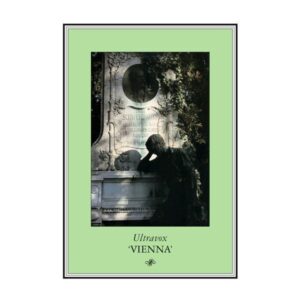
The B-side to the single was ‘Passionate Reply’, a lighter weight synth-pop song. The 12″ single also featured ‘Herr X’, a version of the album track ‘Mr. X’ and sung entirely in German by Warren Cann, with the aid of native German producer Conny Plank. Both tracks were included on the remastered CD version of the Vienna album as bonus tracks.
While the Vienna album did ultimately deliver a pop record, the undercurrent brings in something very different in that it behaves very much like a soundtrack – many works morphing seamlessly into one another. There is something evident in the sum of its parts, that strike a unique balance between its identification with a mainstream pop audience and a darker more experimental side. Featuring instrumentation that is varied, and very well defined, in that it is multi-textural yet occupies its own space – is another clever facet of Ultravox through this era, and one that would later go on to define the very essence of Ultravox DNA.
Opening track, ‘Astradyne’, is defined by its famed introduction and repeated punctuation – the ‘tink’ – courtesy of the CR-78, and despite being 40 years old, seems incredibly sci-fi, even today. It’s a micro-symphony; a unique blend of traditional instrumentation – classically inspired, incredibly melodic and equally as technical, that has layer upon layer of futuristic instrumental. The gentle shimmering piano melody has been seamlessly affected. It features a scorching synth solo – cue the ARP Odyssey – before a dramatic outro.
In simplistic terms, it’s an incredible piece of music. ‘Astradyne’ makes for an interesting title too, apparently a combination of Latin, from the Royal Air Force’s motto, ‘Per Ardua Ad Astra’ (Through Adversity to the Stars) and an aerospace company called Rocketdyne. Billy Currie mentioned in an interview with TEC back in 2012 that ‘Astradyne’ was heavily influenced by La Düsseldorf and, as I’ve also previously mentioned in earlier articles (see Alles Klar – On Tour With Ultravox), the Rother track ‘Zyklodrom’ also appears to have a marked presence.
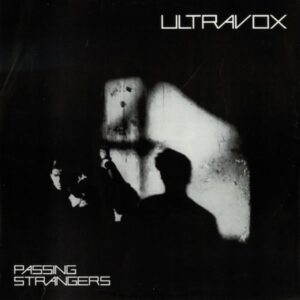
In contrast. ‘Passing Strangers’ is perfectly sing-along. Their second single from the Vienna album and first music video – a post-apocalyptic styled black and white short directed by Russell Mulcahy. The jovial mid synth sections, however, enjoy close alignment to La Düsseldorf’s ‘Cha Cha 2000’.
‘New Europeans’ has a raw and rhythmic rock guitar styled intro – enjoying a moment before the drums crash in. If it were a painting it would be a Pollock, given its sense of abstract expressionist, certainly in terms of the swathes of synth that colour the upbeat chorus – all perfectly articulated. It quickly changes direction with a creative and spacey interlude and then picks up pace again to later feature distinct stabs of piano before coming to an immediate, sharp and abrupt end.
Naked and subdued piano introduces ‘Private Lives’, before the ARP Odyssey engages to produce a high-octane, yet melodic, intervention. The rhythm is filled out and driven with distorted guitar, all of which is backed up with powerful drums. It winds back down to exposed piano once again, giving the impression of sincere melancholy, that is quickly followed up by an emotionally charged sharp synth comeback featuring extreme contrasts of colour and texture that recaptures all of its energy.
The energetic and robotic ‘Sleepwalk’, which, incidentally, was the first single to be released from Vienna, showcases a distinctive heavily weighted electronic bassline of an anthemic nature, layered up with tuneful bleeps, before its eastern-flavoured synth solo rises out of the darkness alongside crashes of percussion – it dips and dives in and out of its own dreamlike state.
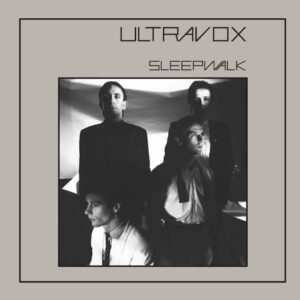
‘Mr X’ is another electronically fused stand out track – Kraftwerk-esque in personality, diversifying with interesting changes of key, it’s another of those tracks that’s far removed from the mainstream. The perfect definition of the Ultravox alter-ego. There’s plenty of layered melodic synth hooks, set against the random atmospheric embellishments – some sinister in inclination, with a spoken voice vocal delivered by Warren Cann, in such a way, it gives the track its own thriller-mystery theme.
Its synthesized bass set alongside a beating heart styled drum machine rhythm, is very effective, especially when melodic synths draw up alongside. Every verse contains a musical development and expansion of theme, something ominous weaves its way into the ether, until a supremely atmospheric and probably one of the most emotive violin solos on record, catches fire, burning bright against a background of more mellow strings – a sublime sound that most likely had a lot to do with the production skills of Conny Plank. It’s a soundtrack that decays in the most addictive way – giving way to an impassioned and layered outro. As the bleeps of intro defining ‘Western Promise’ take over, it’s evident there are no rhythmic subtleties here. The drum sound can be credited to the use of a building in which the surroundings were all glass and polished marble. Another stand out track that is immediately fiery.
The original album closes with ‘All Stood Still’ – ironically, it’s probably the last thing you’d want to do when seeing the band perform it live. The guitars here rock it up significantly and give Vienna yet another edge upon which to scale to the summit. The drum roll at the end of the second verse is always something anticipated – all sumptuously accompanied by a distinctive Mini-Moog bassline. A scorching guitar solo then leads and sets the pace before passing the baton and making way for the equally blistering synth solo, while the guitars switch to a chugging rhythm that forms the backdrop. The interplay between the two lead instruments here is as blinding as an ultraviolet light.
It’s worth a mention that the 2008 remaster of Vienna featured additional tracks. ‘Alles Klar’ was the B-side to the ‘All Stood Still’ single, the fourth to be released from the Vienna album in 1981, and is another standout and powerful instrumental worth a listen. It’s driven by those signature percussive sounds we can so readily identify with Warren Cann, accompanied with bass synth, set alongside atmospheric guitars – all so carefully placed at specific points to give a ghostly presence – a similar characteristic also present on Rage in Eden’s ‘Stranger Within’ and also ‘Monument,’ that came later in 1983 with Monument the Soundtrack.
BUY NOW
AMAZON
In short, Vienna, the album, was revolutionary and exhibits inspired writing for all instruments. It was built upon new ideas and diverse experimentation – blending traditional rock instrumentation and drumming, electronic and robotic personas – courtesy of some distinct use of drum machines, while also taking advantage of bespoke fiery lead lines – be it violins, synthesisers or guitars – all of which were blended to perfect synergy.
That unique interaction created by the mixing of Midge’s guitar and Billy’s ARP solos (in his true Jimi Hendrix of the keys fashion) delivered melodies so intense and varied, that they could often be symphonic in scale – and often welded together. The setting is so very often a futuristic vision, into which a traditional piano or violin can slot into without qualm. Clever use of effects deliver lashings of mood, (they often ran instrumentation through various guitar FX pedals, at source – think phase, flange, distortion and echo,), all of which goes someway to mirror their accompanying stylized videos. Not mere performance videos that tried to marry to a moment in time, but classic ‘shorts’ of stylish film noir, that told their own stories. The collaborative effort of all the instrumentalists is very obvious.
Evidently, Ultravox were also experimental in utilising the natural characteristics of the recording environment, all of which makes for very natural sounding atmospherics – more realistic rather than artificial or forced. I’ve always said no one else sounds like Ultravox, and this remains true.

Their 40-year anniversary does not go unannounced and to mark the occasion is the release of a 40th Anniversary Deluxe Edition (5xCD / 1xDVD Boxset) and contains 66 tracks. 44 are previously unreleased recordings or mixes. CD’s 1 to 5 contain the original 1980 album production master, a new stereo mix by Steven Wilson, A-sides, B-sides and live tracks, 2CDs of previously unreleased cassette rehearsals and a newly mixed concert from St. Albans in 1980. The DVD (audio only) contains a new 5.1 Surround Sound Mix of the album/B-sides by Steven Wilson along with 24/96 Hi-Res audio of the new mixes and the original 1980 master/B-sides.
The set is packaged in a 12”x12” rigid slipcase and contains a 20 page 12” square booklet featuring notes from the band, unseen photos from Midge Ure’s and Chris Cross’ personal collection, four A4 Art Prints and 6 discs in card wallets housed in two 12” gatefold album sleeves.
Through the original ‘Vienna’ pop video, we caught sight of some of the most lavish graves in the Central Cemetery in Vienna (Wiener Zentralfriedhof) – those of Beethoven, Liszt, Schubert, Brahms and not only that, some stunning architecture. In many ways the song, if not the whole album, mirrored those fragments of opulence – albeit in musical form.
![]()

The 40th Anniversary Deluxe Edition of Vienna is available now:
Vienna [Deluxe Edition]: 40th Anniversary
http://www.ultravox.org.uk
https://www.facebook.com/UltravoxUK
https://twitter.com/UltravoxUK
- ALIEN SIX –1 - December 24, 2021
- TIN GUN – Reanimation - November 22, 2021
- TENEK – Smoke and Mirrors (Instrumental) - November 6, 2020


